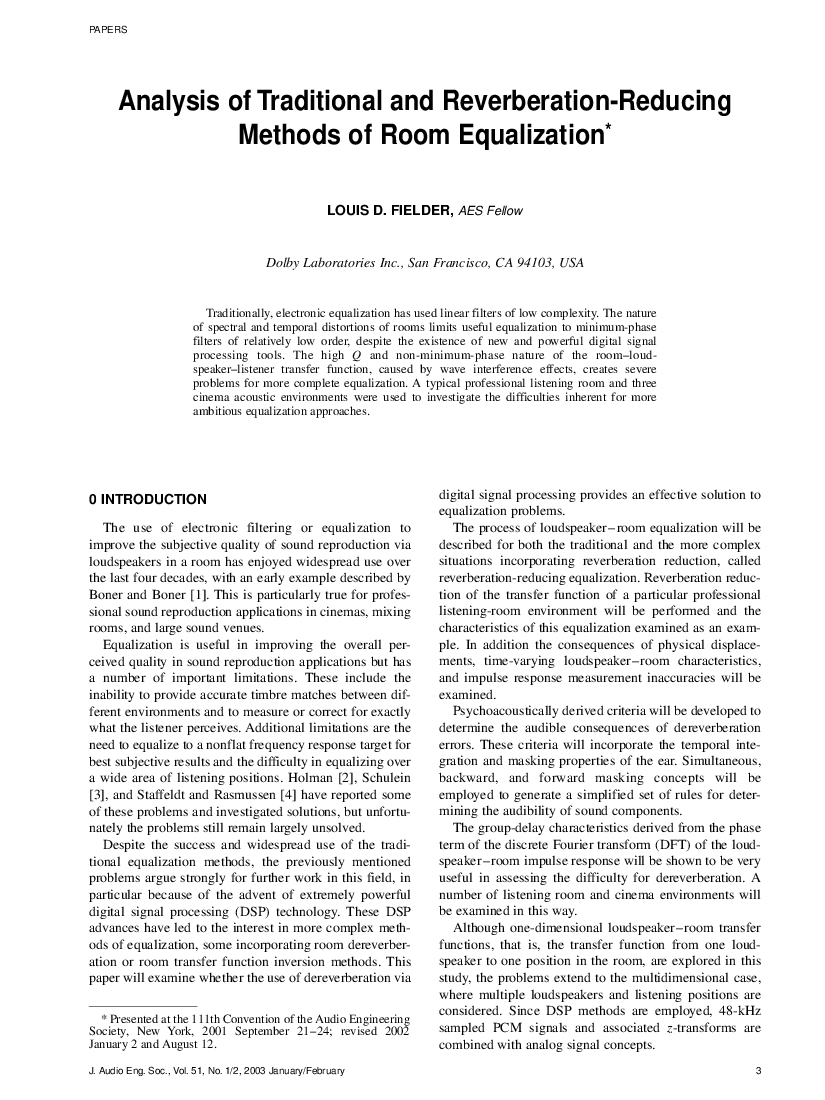Home / Publications / E-library page
You are currently logged in as an
Institutional Subscriber.
If you would like to logout,
please click on the button below.
Home / Publications / E-library page
Only AES members and Institutional Journal Subscribers can download
Traditionally, electronic equalization has used linear filters of low complexity. The nature of spectral and temporal distortions of rooms limits useful equalization to minimum-phase filters of relatively low order, despite the existence of new and powerful digital signal processing tools. The high Q and non-minimum-phase nature of the room loudspeaker `listener transfer function, caused by wave interference effects, creates severe problems for more complete equalization. A typical professional listening room and three cinema acoustic environments were used to investigate the difficulties inherent for more ambitious equalization approaches.
Author (s): Fielder, Louis D.
Affiliation:
Dolby Laboratories Inc., San Francisco, CA
(See document for exact affiliation information.)
Publication Date:
2003-02-06
Import into BibTeX
Permalink: https://aes2.org/publications/elibrary-page/?id=12249
(2998KB)
Click to purchase paper as a non-member or login as an AES member. If your company or school subscribes to the E-Library then switch to the institutional version. If you are not an AES member Join the AES. If you need to check your member status, login to the Member Portal.

Fielder, Louis D.; 2003; Analysis of Traditional and Reverberation-Reducing Methods of Room Equalization [PDF]; Dolby Laboratories Inc., San Francisco, CA; Paper ; Available from: https://aes2.org/publications/elibrary-page/?id=12249
Fielder, Louis D.; Analysis of Traditional and Reverberation-Reducing Methods of Room Equalization [PDF]; Dolby Laboratories Inc., San Francisco, CA; Paper ; 2003 Available: https://aes2.org/publications/elibrary-page/?id=12249